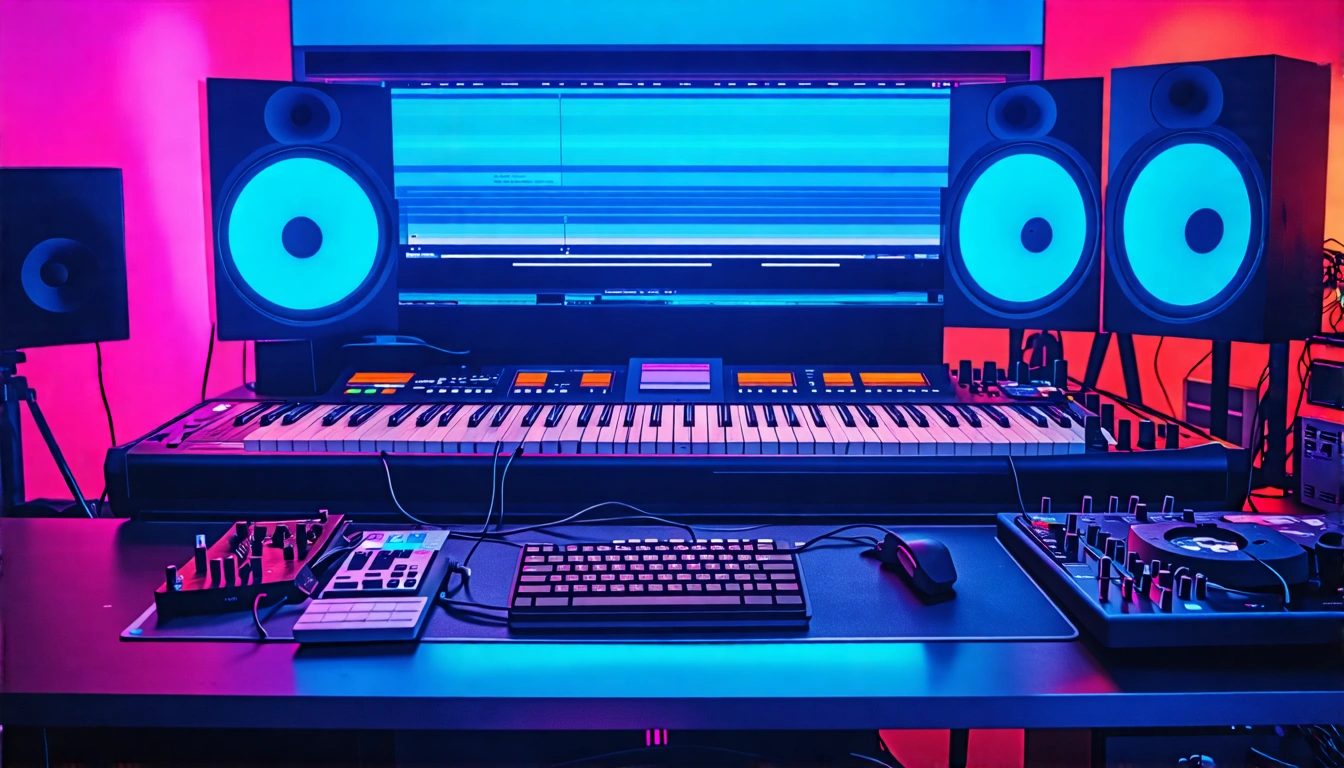Lo-fi music has carved out a unique niche in the audio landscape, attracting listeners who appreciate its soothing sounds and nostalgic vibes. This genre is characterized by its chill beats and relaxed atmosphere, making it ideal for studying, working, or simply unwinding. If you're curious about producing your own lo-fi tracks, this guide will walk you through the fundamental steps involved in creating your very first lo-fi song.
What is Lo-Fi Music?
Lo-fi, short for "low fidelity," refers to a music style that embraces imperfections in sound quality. These imperfections can include background noise, vinyl crackle, or audio distortions that evoke a sense of nostalgia. Lo-fi is often associated with genres like hip-hop and jazz, but it has evolved into a standalone category that blends various musical elements. Many listeners enjoy lo-fi for its calming effects, making it a popular choice for study playlists.
Getting Started with Production
Choosing a Digital Audio Workstation (DAW)
The first step in producing lo-fi music is selecting a digital audio workstation (DAW). A DAW is software that allows you to record, edit, and produce audio files. There are numerous options available, including free versions. One of the most popular DAWs is FL Studio, known for its user-friendly interface and powerful features.
You can download a free demo of FL Studio to start experimenting with your lo-fi production. Once you've installed your DAW, open it up, and let's get started!
Setting the Tempo
Lo-fi music is typically characterized by a slower tempo, which contributes to its relaxed vibe. A good tempo range for lo-fi is anywhere between 60 to 90 beats per minute (BPM). Setting the right tempo will help establish the overall feel of your track. For this guide, we'll use a tempo of 90 BPM.
Creating Chords
Chords form the backbone of your lo-fi track. A commonly used type of chord in lo-fi is the seventh chord, also known as a jazz chord. Seventh chords consist of a triad (three notes) accompanied by an additional note, creating a fuller sound. Fortunately, you don't need to be a music theory expert to create these chords.
In FL Studio, you can access the piano roll feature to input your chords. For beginners, starting in C major is a great option. Here’s how to create a seventh chord:
- Open the piano roll in FL Studio.
- Use the scale highlighting feature to select the C major scale.
- Place a note on every second white key while skipping the black keys.
- Once you've created your seventh chord, experiment with placing additional notes to develop a chord progression.
Adding Bass
With your chords in place, it’s time to add a bassline. The bass provides depth and complements the chords you've created. You can choose a bass sound from the instrument packs available in your DAW. Acoustic bass sounds work well for lo-fi, but you can also experiment with different bass samples.
To create a simple bassline, follow these steps:
- Select the root notes of your chord progression.
- Copy these root notes into a new track designated for your bass.
- Adjust the timing of the bass notes, ensuring they don’t overlap with the chord notes.
- Preview your bassline along with the chords to ensure they blend well together.
Crafting the Drum Beat
Drums are essential in giving your lo-fi track rhythm and groove. While you can use pre-made drum loops, creating your own custom drum pattern allows for a more personal touch. Look for lo-fi drum samples that resonate with your vision.
When building your drum pattern, keep in mind the simplicity that defines lo-fi. A basic kick, snare, and hi-hat pattern will suffice. Experiment with different sounds until you find a combination that complements your chords and bassline.
Developing the Melody
Once you have your chords, bass, and drums in place, it’s time to create a melody. This melodic line will add an engaging element to your track. You can either play around on a MIDI keyboard or use the piano roll to input notes manually.
- Listen to your chord progression and bassline.
- As you play or input notes, focus on creating a melody that fits well with the established elements.
- Don't be afraid to experiment with different rhythms and note lengths until you find something that sounds pleasing.
Adding Imperfections
A defining characteristic of lo-fi music is its imperfections. To achieve that authentic lo-fi sound, consider incorporating elements like vinyl crackle, tape hiss, or subtle background noise.
Using effects plugins, you can easily add these textures to your track. For example, the Cinematic Origin plugin offers a preset specifically designed for lo-fi sounds. Adjust the settings to your liking to achieve the right balance of texture without overwhelming the music.
Finalizing Your Track
With all the elements in place, it’s time to bring everything together. Play back your track and make necessary adjustments to ensure all parts fit cohesively. You may want to tweak the volume levels, add effects like reverb or delay, or even introduce additional melodies or chord changes for variety.
Once you’re satisfied with your composition, export your track to share it with others or keep it for your personal listening enjoyment.
Conclusion
Producing lo-fi music is an accessible and rewarding creative outlet. By following these fundamental steps, you can craft your own lo-fi tracks that capture the genre's essence. Remember, the key to lo-fi is simplicity and authenticity—embrace the imperfections and let your creativity flow.
Whether you're looking to enhance your study sessions, create a relaxing atmosphere, or simply explore music production, lo-fi offers a wonderful avenue for self-expression. If you have any questions or need further guidance, feel free to reach out, and happy producing!
